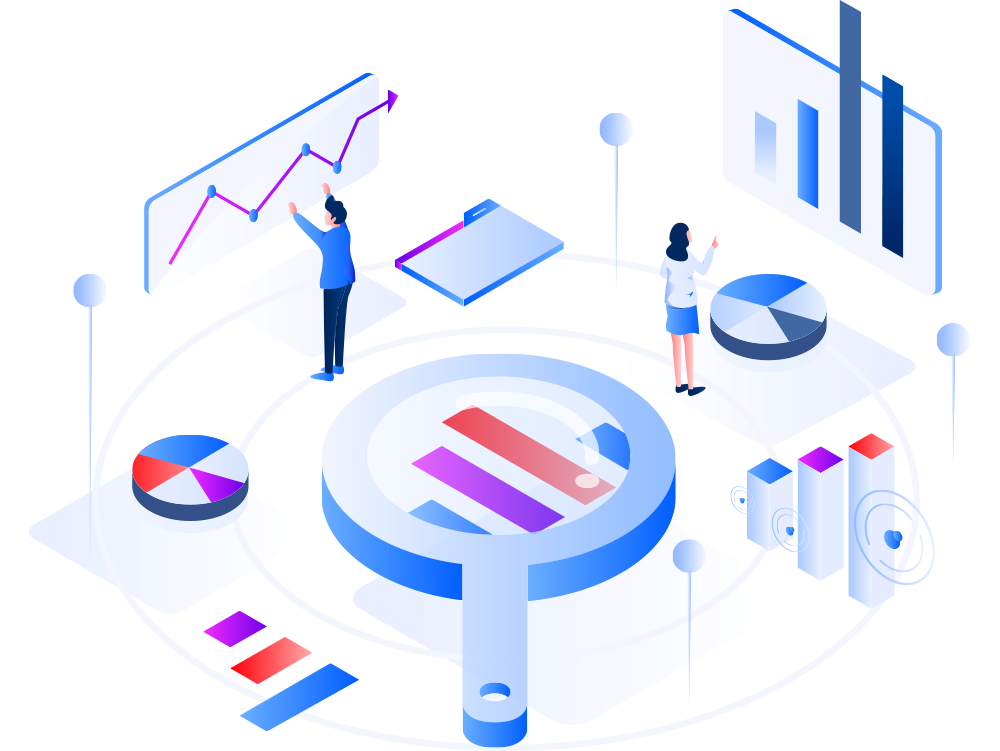
Software Development
Software development is the process of creating, testing, and maintaining software applications. It involves applying principles and techniques from computer science, engineering, and mathematical analysis to create software that is reliable, efficient, and easy to use.
The software development lifecycle (SDLC) is a structured workflow that helps organizations move software from design to deployment and ongoing operations. The SDLC typically includes the following phases:
- Planning
- Requirements analysis
- Design
- Coding
- Testing, Deployment
- Maintenance
Software development can be sequential, with each step completed before the next, or iterative, where multiple steps can be executed at once.
At Vintage Digital Solution our software developers use a variety of tools and models, including:
- Integrated development environment (IDE),
- Version control,
- Computer-aided software engineering,
- Software documentation, and Software development kits (SDKs).
Software development refers to the process of designing, creating, testing, and maintaining software applications, systems, or programs. It involves various stages, from gathering requirements to deploying a final product. Software development can be broken down into several key phases:
Planning:
Understanding the problem, gathering requirements, and creating a roadmap.
Design:
Architecting the system, which includes database design, user interfaces, and software architecture.
Implementation:
Writing the actual code, turning designs into working software.
Testing:
Verifying that the software functions as intended, both in terms of functionality and security.
Deployment:
Delivering the software to users, either through installation or on a cloud platform.
Maintenance:
Ongoing updates, bug fixes, and improvements based on user feedback and technological advancements.
There are different methodologies used in software development at Vintage Digital Solution:
Waterfall:
A linear and sequential approach, where each phase is completed before the next one begins.
Agile:
An iterative and incremental approach where the product evolves over time with feedback and continuous development.
DevOps:
Combines software development (Dev) and IT operations (Ops) for continuous integration, testing, and delivery.
Benefits Of Software Development At Vintage Digital Solution :
Automation and Efficiency
- Streamlining Processes: Software can automate repetitive tasks, saving time and reducing errors. This increases productivity by allowing employees to focus on higher-value tasks.
- Cost Reduction: Automated processes and reduced human intervention lead to lower operational costs
Enhanced Communication and Collaboration
- Collaboration Tools: Software applications enable remote and cross-functional teams to collaborate effectively, with tools like Slack, Microsoft Teams, or Jira.
- Improved Customer Communication: Customer relationship management (CRM) systems help businesses manage customer interactions and improve service quality.
Scalability and Flexibility
Adaptability to Growth: Software can be customized and scaled as a business grows, accommodating increasing workloads and new functionalities without requiring a complete overhaul.
Cloud Solutions: Cloud-based software allows for scalable storage and computing power, providing flexibility as businesses grow.
Data Management and Analytics
Better Decision Making: Data-driven decision-making is enhanced through analytics software that processes and visualizes data to provide actionable insights.
Data Organization: Well-designed software systems help businesses manage large datasets efficiently, making retrieval, analysis, and reporting easier.
Innovation and Competitive Advantage
New Product Development: Software development enables businesses to create innovative products and services, giving them an edge in competitive markets.
Custom Solutions: Custom software can address specific business needs, giving companies a tailored solution that competitors might not have.
Improved Customer Experience
User-Friendly Applications: Well-designed software enhances customer satisfaction by providing seamless experiences through mobile apps, websites, or customer support systems.
Personalization: With software, businesses can offer personalized services and recommendations, improving customer loyalty and retention.
Increased Security
Data Protection: Software solutions often come with built-in security features that protect sensitive information from breaches, ensuring compliance with data protection regulations.
Access Control: Developers can implement sophisticated authentication mechanisms to control user access to sensitive areas of the software.
Global Reach
Online Presence: Software solutions such as websites and mobile apps allow businesses to reach global audiences, breaking geographical limitations.
E-commerce: Online stores and platforms enable businesses to offer products and services to customers worldwide.
Integration with Other Systems
Unified Systems: Software development allows businesses to integrate various systems, such as supply chain management, accounting, and CRM, into one cohesive solution.
Third-Party API Integration: Businesses can connect with other services (payment gateways, social media platforms, etc.) through APIs to enhance their capabilities.
Continuous Improvement
Agile Development: Through continuous updates, bug fixes, and new feature rollouts, software can evolve and improve over time, ensuring it stays relevant and efficient.
Customer Feedback: Software allows for real-time feedback and rapid adjustments, leading to a more responsive and improved service or product.
The benefits of software development at Vintage Development touch virtually every aspect of a business, from operational efficiency to customer satisfaction, and even to innovation. Investing in well-developed software can provide long-term competitive advantages and drive growth.
Everything you need to know about services
The SDLC is a structured process that outlines the stages involved in developing software, including planning, requirements analysis, design, coding, testing, deployment, and maintenance.
We utilize various methodologies, including Waterfall, Agile, and DevOps, depending on project requirements and client needs.
Yes, we offer tailored software solutions designed to meet the specific needs of your business, enhancing efficiency and productivity.
We implement built-in security features and access control mechanisms to protect sensitive information and ensure compliance with data protection regulations.
We provide ongoing support and maintenance services, including updates, bug fixes, and improvements based on user feedback to ensure long-term success.

